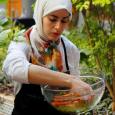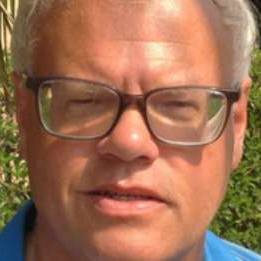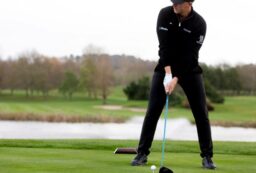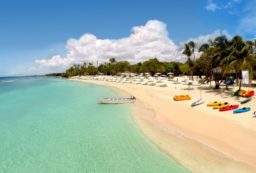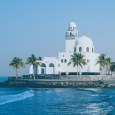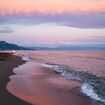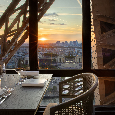
Looking along Scotland’s Golf Coast from the Fairmont St Andrews Hotel there is a momentous sense of history. Long ago shepherds hand-crafted their wooden clubs to hack a ball over the fast-draining smooth sheep-grazed turf. Perhaps those shepherds looked up from a putt to see the the storm-battered Spanish Armada limp past on its long trek home. Even back then, in 1588, St Andrews Old Course was already old, challenging golfers for nearly two centuries.

Gazing out from the St Andrews Grill at the Fairmont – perhaps taking a break from a seafood platter of oysters, prawns, salmon, crayfish and of course lobster – you view the last few holes of the Kittocks Course. Beyond is the beach where the iconic opening scene of Chariots of Fire was filmed and also the ruins of St Andrews Cathedral. Talking of more recent history, one cafe proudly proclaims to be the place “Where Wills met Kate.” Though immediately deflates the claim with the addenda “for coffee.” Inevitably, St Andrews university where they also took coffee and studied is also Scotland’s oldest.

A welcome gift at the Fairmont St Andrews reminds you of the heritage: a wee bottle of whisky accompanied by a chocolate miniature golf club and golf ball. If you have any lingering doubts that this is Scotland they are soon dispelled by a Highland Honours welcome from Davey in his Stewart Clan trousers and Tam o’ Shanter. This the sort of grand towering baronial entrance hall, with raw sculpted wood carvings, that Lady Macbeth would have aspired to. There’s also an early morning reminder of where you are with daily offerings of porridge and haggis amongst the vast buffet that is breakfast.
"It was along this coastline that golf evolved. First as a casual pastime for shepherds with their hand-crafted clubs. Then moving on through the baffing spoon, brassie, mashie nibblick and spoon into today’s sophisticated high-tech sport where the metals on the leading edge of a club can be seven times stronger than on the nose of the capsule which landed Neil Armstrong on the moon."
It was along this coastline that golf evolved. First as a casual pastime for shepherds with their hand-crafted clubs. Then moving on through the baffing spoon, brassie, mashie nibblick and spoon into today’s sophisticated high-tech sport where the metals on the leading edge of a club can be seven times stronger than on the nose of the capsule which landed Neil Armstrong on the moon. Now golf, almost a religion for some, has its complex rituals of etiquette and, like haute-couture, has seasonal launches of both attire and equipment.

Disciples from St Andrews may have given the game to the world but countries have customised golf, made it their own with azaleas in Augusta, pythons in Africa’s rough and desert sands forming the deep bunkers of Arabia. Yet the game is at its purest form in St Andrews. Golfers, from all over the globe, put a tick on their bucket list as they play at St Andrews.

For all the Research and Development budgets, for all the technological innovation, there’s something primeval about golf at St Andrews, pitting your mind and body against the elements: thinking tactically to outwit a squally storm mentioned in the radio’s shipping forecasts. Taking a glug of whisky from your hip-flask, as, like a Highlander’s daring attack, you look to thread a low iron beneath the treacherous, swirling winds and through the deep timber-revetted bunkers.

The Kittocks Course and the Sam Torrance course, cutting through the 520 acres of the Fairmont St Andrews headland, give players a chance to taste the intense professional sport that golf has become. 18 holes selected from these two courses combine to become of one of the final qualifiers for the British Open. This year 80 players battled, prayed and scrapped for just three places at Port Rush. Next year they will battle it out again on a course that channels the spirit of St Andrews Old Course: braes obscuring the fairway, stone bridges over babbling burns and thick rough of wispy white grasses and tough thistles. Rough thick enough to hide Bonnie Prince Charlie from the searching Sassanach armies.
Tweaked the back after the intercontinental flight or long drive to Scotland? Old sporting injury playing up? Mind scrambled after all those mental calculations of ball-flight and windspeed? Calf muscles aching from climbing those braes? The Fairmont’s Spa offers a wide range of treatments, relaxation rooms, a huge swimming pool and a physiotherapist for those more serious niggles.

Don’t rush home, linger a few days in St Andrews. On Sundays the Old Course observes the Sabbath and rests. As it’s publicly owned land you can walk its fairways, even stop for a picnic. Finally, you can stand on the famous Swilken bridge, on the 17th fairway, pause and imagine the golfers who have stood on this bridge: some on the verge of triumph, some in despair. Surely there can be no more evocative location in golf’s rich history?


